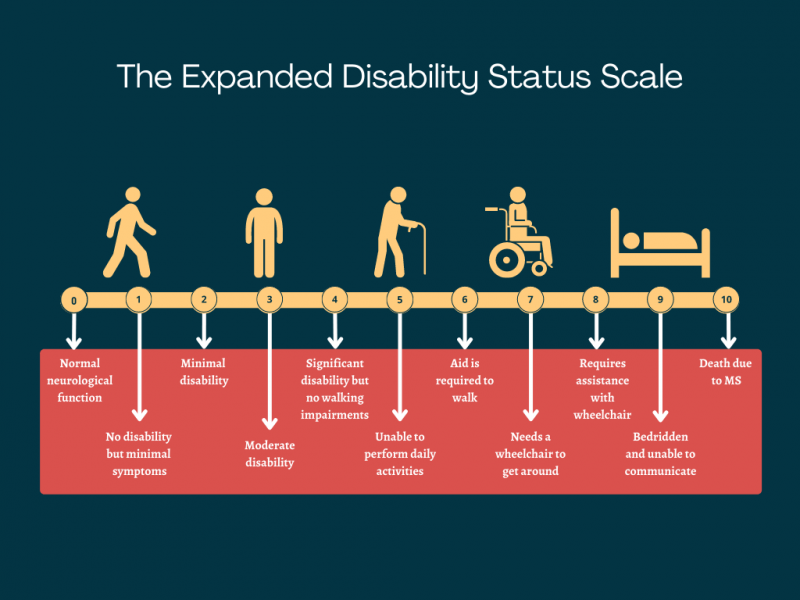
FAQs about MS prognosis and life expectancy
Multiple sclerosis itself is not usually fatal, but it can increase the risk of complications, such as infections or trouble swallowing, that can shorten survival. On average, life expectancy is about five to 10 years shorter in people with MS compared with the general population.
On average, it takes about 15-20 years from symptom onset for someone with multiple sclerosis to need a cane or other walking aid. However, the condition progresses differently for everyone. Some people experience significant disability much sooner, while others may go decades without developing truly disabling symptoms.
Multiple sclerosis is not terminal, but as the disease progresses, it may impair a patient’s ability to function independently, and also reduce quality of life. These changes may require certain accommodations in day-to-day life. Living well despite MS may also require lifestyle adjustments, such as exercising and stopping or cutting back smoking, as well as treatment and regular monitoring to improve long-term outcomes.
In multiple sclerosis, the immune system continuously damages the nervous system, even when patients are experiencing only mild symptoms or no symptoms at all. For this reason, it is generally recommended that patients start treatment as early as possible. People who start treatment early are generally more likely to live longer and have less disability.
Multiple sclerosis can make it difficult to walk, and some patients will eventually rely on a wheelchair to help them get around and retain their independence. While there is substantial variability from person to person, one study estimated that about one-quarter of patients receiving modern treatments will require a wheelchair within about 35 years of their diagnosis.
 Fact-checked by
Fact-checked by 





